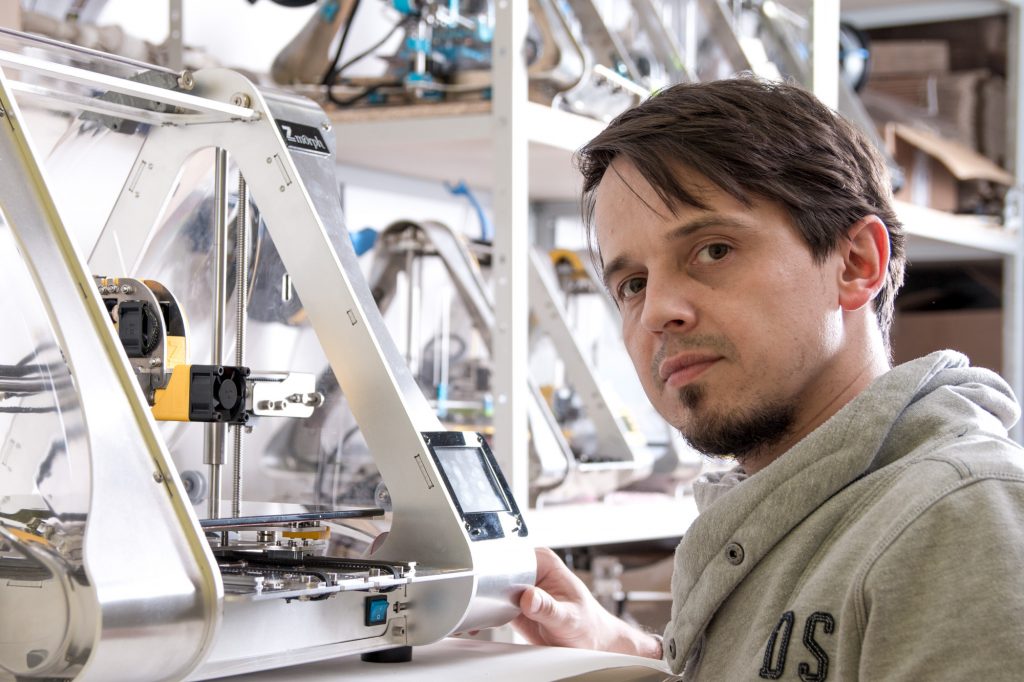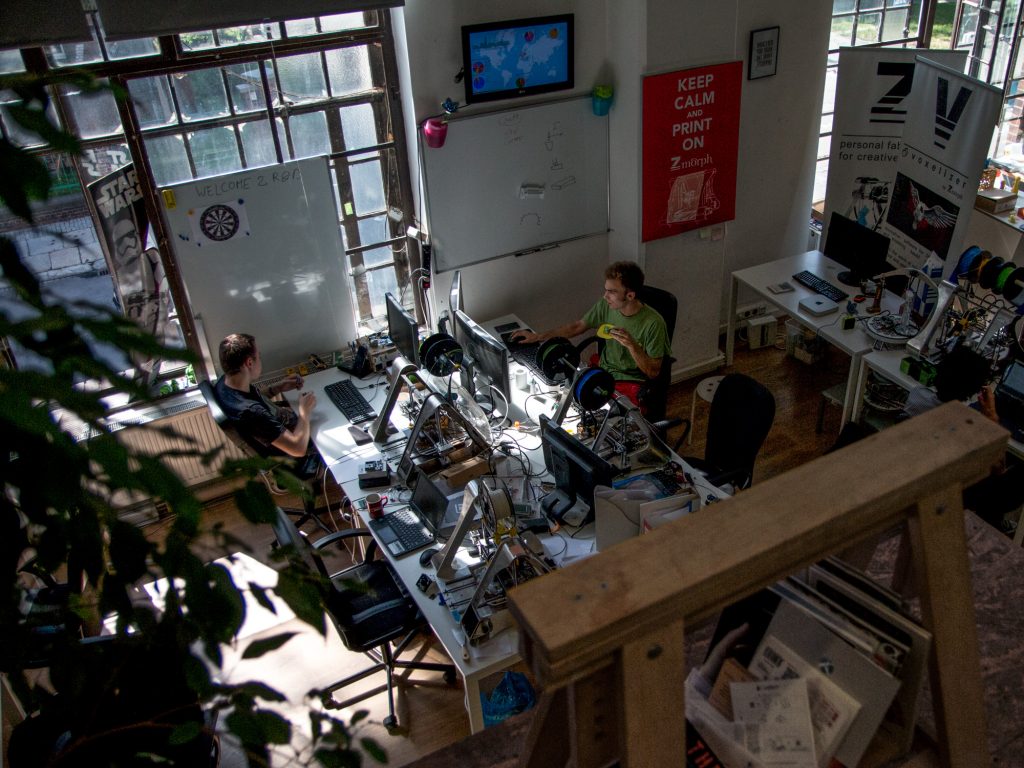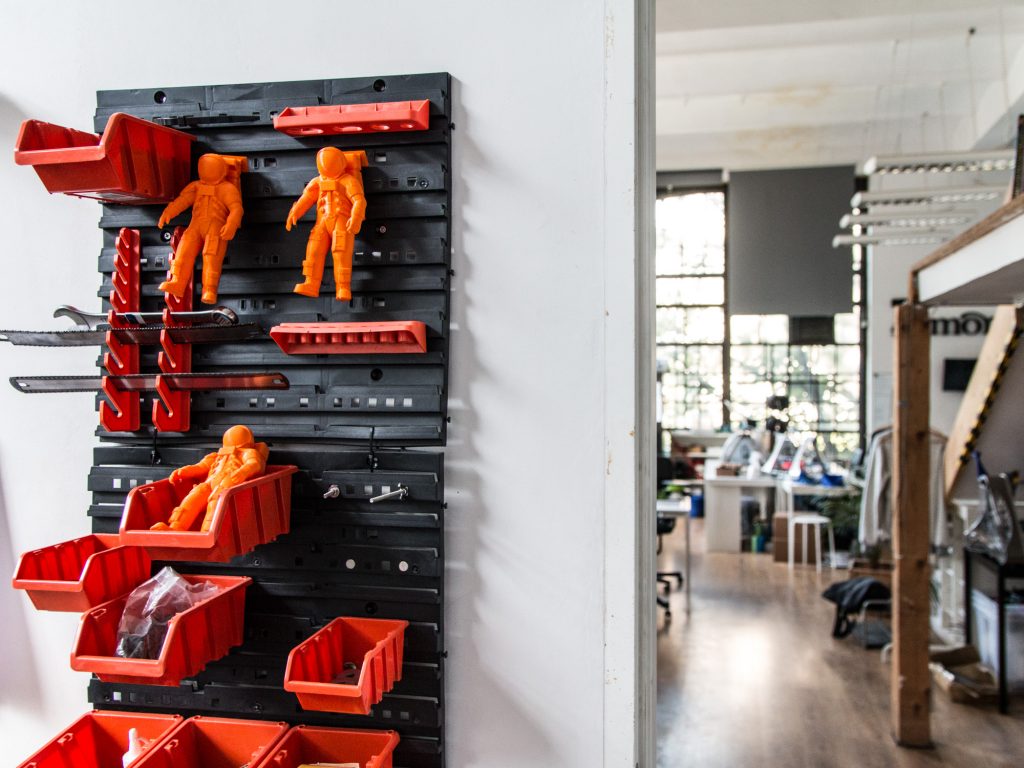Przemek Jaworski believes that, “3D printing is something that will change the world because of the distribution of goods and distribution of ideas.” As a former academic, designer and architect the CEO and founder of ZMorph is well placed to make such an observation.
Jaworski launched the Polish company in 2013 and has since grown the enterprise beyond the borders of the Northern European country to a position where ZMorph now has a sales network spanning over 50 markets globally. ZMorph’s mission, “is to enable creativity in people who want to be creative.”
I caught up with the CEO to discuss his thoughts on the state of 3D printing at the end of another eventful year, his thoughts about the future of the industry, some insights on how to grow a successful business and ZMorph’s plans for 2017.

The future of 3D printing
“I don’t think it’s going to be an overstatement to say that voxels are the future of 3D printing,” Jaworski says.
With .stl you only represent the boundary but there is no information about the inside, it is empty. With voxels you can represent not only things like distance from the boundary but you can represent the density of the material, the strength, the direction of stresses and you can also represent various materials together. So you can represent density of material in every voxel. There are a lot of opportunities.
Since founding ZMorph, Jaworski has made a considerable investment in R&D in order to unlock those opportunities. “We have developed all the toolheads and various workflows for managing objects, so that is a lot of research and a lot of work. I believe there will not be many companies to chase us.” The toolheads referred to are at the core of the ZMorph 2.0 SX multitool 3D printer and the recently upgraded Dual Pro Plastic Extruder.
This upgrade was a, “complete remake of the previous model. So we redesigned every part of this machine and then we added some quite sophisticated software and firmware and electronics solutions to it,” says Jaworski.
The machine has proved popular with customers using the ZMorph 2.0 SX as a both a 3D printer and also in more complex workflows. “Instead of buying five machines you buy one. You buy the toolhead and switch the function.”
Multifunctionality means the user can, “exchange toolheads rapidly and in one minute we can switch the machine from 3D printing to laser cutting for example or from laser cutting to ceramics printing or from ceramics printing to CNC cutting.” Jaworski explains that the modular system, where components such as fans and the cover are mounted magnetically, means that switching between functions is a rapid process that does not slow down work. “The most important use is product development” and the ZMorph 2.0 SX has also proved popular with designers and engineers for “decreasing costs of tooling, like jigs or fixtures.” Small batch production and use as an educational tool, for example in Makerspaces and Fablabs, are frequent application areas.
The CEO is also proud of the Dual Pro Plastic Extruder saying,
Color mixing is actually our key feature that we introduced at the end of 2015 but now we have pushed it much further with our software and firmware and now we really can do a lot with it not just including color printing and image mapping on objects or gradient printing, where we mix 2 colors in many gradients. But it is also things like this water soluble 3D printing where we can print complex mechanisms and more intricate things that haven’t been present in FFF. Like printing architectural models on the go with translucent materials for windows, opaque materials for structures and so on.

Growing a 3D printing business
ZMorph’s CEO sees multifunctionality as a trend to watch for 2017. He likens the progression of 3D printing to that seen in the 2D market where early printers were capable only of a single function, “but now most of the machines you see in the shops are multifunctional, they have a scanner a fax, color and so on.”
For the new year Jaworski plans to further develop, “Multicolor printing and multi-material in the sense of various properties of the material. We will be mostly improving and developing the things we already have.” However the company are also, “planning educational orientated tool heads. For example a 5-axis toolhead that we are planning to release by the end of next year.” This will have applications for, “teaching how to program advanced robots and start navigating advanced robots.”
Education is certainly a recurring theme in our conversation. As a former lecturer in design at University College London (UCL) it is an area Jaworski knows well. He says, “There is a huge gap between when someone has an idea and the creation of a digital representation of that idea. When you have an idea and you don’t have the means to convert it to a 3D file, you’re stuck.”
Overcoming this barrier will require a combination of enhanced software, hardware and the ways in which design for 3D printing is thought about. Jaworski also sees 3D printers becoming smarter, “Because of the increased attention that companies like ours put into software [3D printers will] start to predict what the user wants to do. As the machines get more sensors and they become more intelligent they won’t really need to ask for all these parameters, they will guess them or they will use the defaults that are giving perfect results.”
As 3D printing advances, “customers are becoming more aware and open to these technologies the market is growing in the same way that as the cell phone market was growing before. We’ll see more integration with various services online and that is inevitable.”

Wrapping up our conversation we talk about the next generation of designers who are growing up surrounded by enabling technology. Jaworski is optimistic about the potential of this group to truly harness the capabilities of 3D printing saying,
“I think it is absolutely crucial, we really need to educate people about learning how to transfer their ideas into projects. Digital crafting, that is something that should be taught at every level in schools. Even in primary schools awareness of this needs to be raised.”
More information about the ZMorph suite of products is available here.
Featured image via ZMorph.


